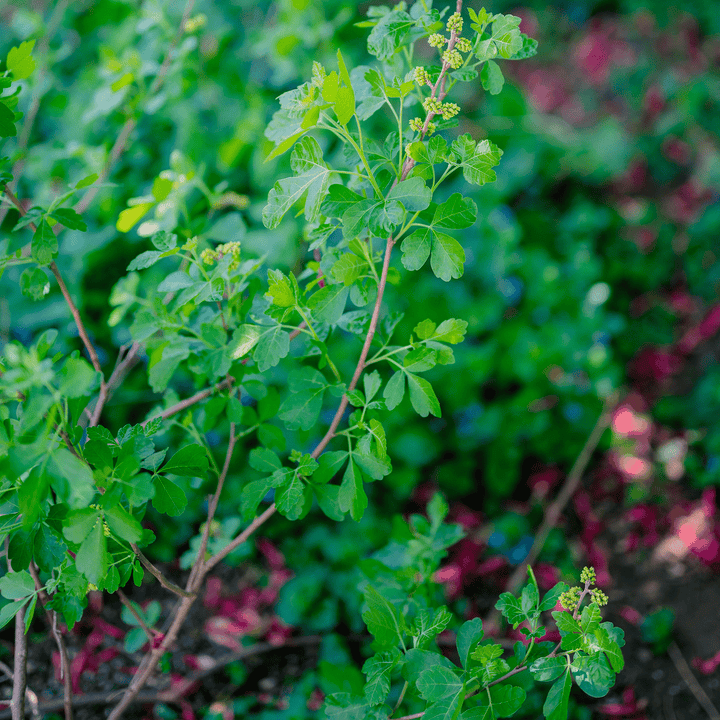Hardy, deciduous North American shrub
Description: Clusters of small, fragrant, yellow-green flowers on female plants in early spring, followed by hairy, red berries; male plants form catkins in late summer that bloom in early spring, but do not form berries; fragrant, trifoliate leaves turn rich shades of orange, red, and purple in fall
Habit: Dense shrub grows up to 6’ high and 10’ wide; spreads slowly by suckering
Culture: Prefers full sun to partial shade and dry to medium, well-drained soil; drought tolerant
Hardiness: Cold hardy to USDA Zone 3
Origin: Eastern North America
Attributes: Attracts birds, bees, and butterflies; Fragrant foliage; Showy fruits; Fall color; Drought tolerant
Named for its fragrant leaves, twigs, and flowers, this Rhus is native to dry, rocky prairies and open woods and fields from eastern Canada south to Florida and west to South Dakota and Texas. Philadelphia plant explorer and nurseryman John Bartram included Rhus Canadensis (syn. R. aromatica) in his Catalogue of American Trees, Shrubs, and Herbacious Plants (1783). The female flowers are a nectar source for butterflies and birds feed on the berries. While related to Poison Ivy (Rhus radicans), Fragrant Sumac is not poisonous.
This plant will ship bare root. Approximately 18" tall.
Bare root planting tips:
~ If you can't plant immediately, store your plant in a cool location and keep the roots moist or pot in a container with a nursery potting mix from your local garden center.
~ Before planting, let the roots soak for several hours as you prepare the site. You'll want to dig a large enough hole so the root mass can spread out and the plant is at the same soil level as when it was growing in the nursery.
~ Once planted, water it in well and wait a month before fertilizing. Mulching will help to maintain moisture and raise soil temperatures for faster growth.
Details
| Genus | Rhus |
|---|---|
| Species | aromatica |












